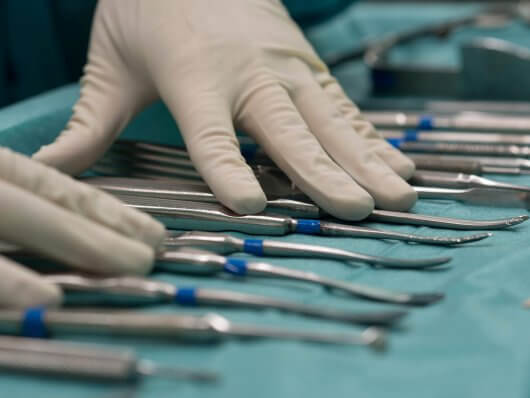The temporomandibular joint (TMJ) acts as a sliding hinge between the jawbone and the skull. Because these joints are flexible, the jaw can move smoothly up and down and from side to side, allowing us to speak, chew, and yawn. Muscles attach to and surround the jaw joints, controlling their position and movement.
Temporomandibular disorders, commonly called TMJ disorders, are disorders that cause pain and dysfunction in the joints and muscles that control movement of the jaw. This problem seems to be more common in women than in men and is frequently the subject of consultation with the maxillofacial surgeon.
These types of alterations are divided into three categories:
- Myofascial pain in the muscles that control the jaw.
- An internal asymmetry caused by a slipped disc, dislocated jaw, or condyle injury.
- Degenerative and inflammatory alterations of the temporomandibular joints.

What are the symptoms?
- Pain in the face, jaw, or neck.
- Pain in, around or in front of the ear.
- Pain on both sides of the head.
- Pain on one side of the head, which is activated by clenching the teeth.
- Pain in the muscles and/or joint of the jaw.
- Limited movement or locking of the jaw.
- Stiffness in the jaw muscles.
- Difficulty or discomfort chewing.
- A change in the way the teeth fit together.
- Muscle spasms around the jaw.
What causes TMJ disorders?
- Injury to the jaw or temporomandibular joint.
- A malocclusion.
- Orthodontic treatment.
- Wear of the disc or joint cartilage.
- Stress or anxiety. Tendency to clench or grind the teeth (bruxism).
- Rheumatoid arthritis or gout, diseases that cause inflammation of the jaw.
Treatments
Conservative treatments:
Many times these alterations are transitory and do not worsen. These cases only require a simple treatment to alleviate the discomfort. The Teknon Maxillofacial Institute team begins with less invasive therapies such as custom-made stabilization splints and physiotherapy.
Surgical treatments:
If these therapies do not control the symptoms, the first therapeutic option consists of a minimally invasive maxillofacial surgery.
- Arthrocentesis: using two intra-articular needles, a joint wash is performed to eliminate all microscopic particles and a solution is injected to help lubricate the joint.
- Arthroscopy: through an approach in front of the ear, an intra-articular camera (arthroscope) can be inserted to allow the surgeon to examine the joint and thus remove inflammatory tissue and manipulate the structures.

If the temporomandibular problem causes great functional disability and there is no response to conservative measures, the damaged joint must be replaced with a prosthesis.
- Joint replacement: diseased parts of the jaw are replaced with an artificial substitute: temporomandibular joint prosthesis.
- Open surgery: In the case of tumors in the joint or other specific pathologies, it may be necessary to perform a complete open approach to the joint so that the surgeon can have full access to it.
It might interest you: Vídeo: what are TMJ disorders and how we can treat them.








